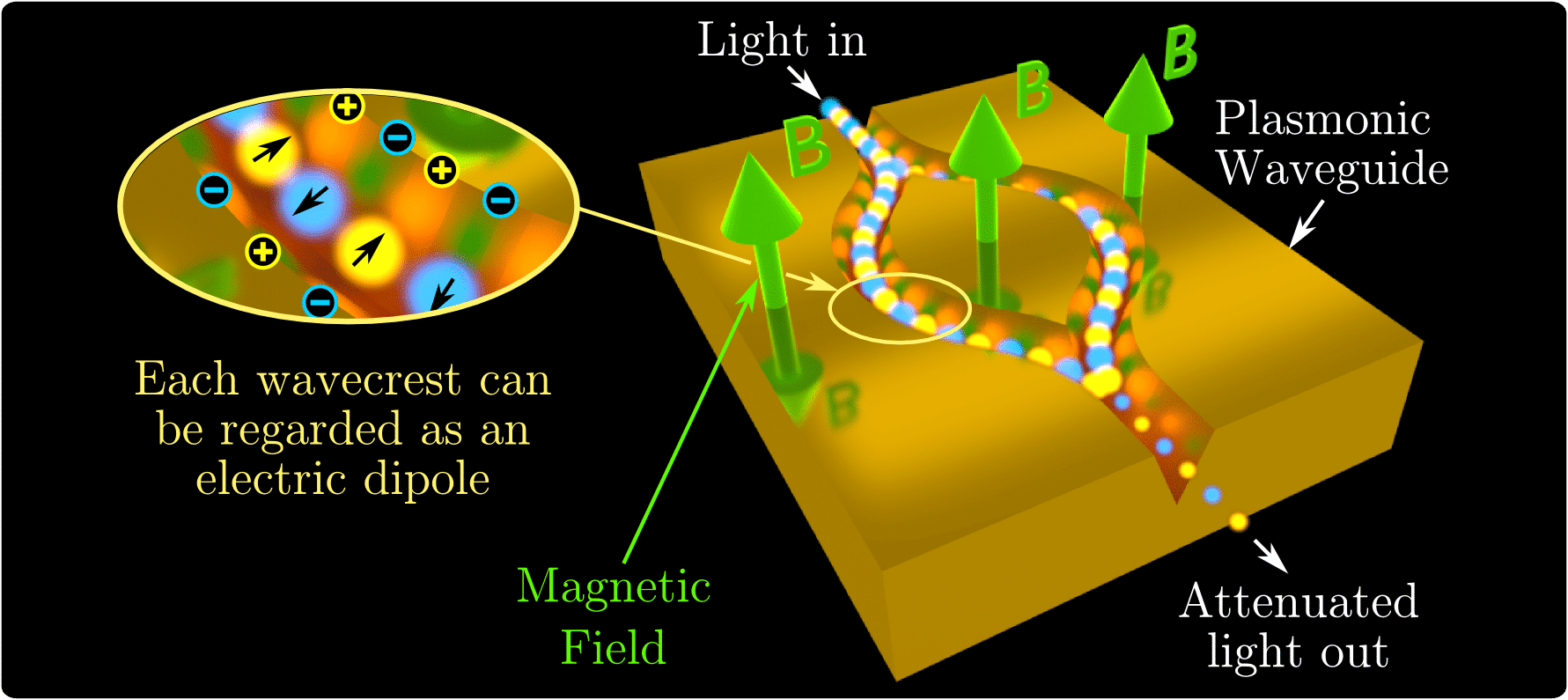
The Aharonov-Bohm-Like Effect in Plasmonics
The Aharonov-Bohm effect is both one of the most celebrated and vigorously debated effects in quantum physics. In essence, it predicts that the phase of charged quantum mechanical particles, such as electrons, will be shifted as a result of encircling a region penetrated by magnetic field. The phase shift will occur even if the electrons are confined to travel only through space where magnetic field is strictly zero, such as around an infinitely long solenoid. The modern view on this unusual phenomenon, is that the electrons can ‘sense’ the vector potential that encircles the infinite solenoid, since it is the vector potential that enters the Shrödinger Equation, and therefore affects the evolution of electron wavefunction. The Aharonov-Bohm effect is not unique; there exist many twin-effects that arise as a result of the same physical laws. In particular, the He-McKellar-Wilkens (HMW) effect predicts additional phase gain for the particles with electric dipole that propagate through a region with uniform static magnetic field. First described in the beginning of 1990s, this effect has remained unconfirmed until few years ago, mainly due to difficulty in obtaining a coherent stream of quantum mechanical particles with non-zero electric dipole.
|
|
| Fig. 1: The proposed plasmonic version of the HMW effect in a V-groove waveguide. |
We will demonstrate that by viewing plasmons travelling along a V-groove plasmonic waveguide as a row of propagating electric dipoles with alternating orientation (see Fig. 1), it should be possible to observe a plasmonic equivalent of the HMW effect. Applying magnetic field perpendicular to the direction of propagation of the plasmons will cause the wavefunctions of all electric dipoles to shift. Such a shift could be detected in an interferometer setup as attenuated light transmission that arises due to plasmon interference. We will provide numerical analysis to show that the effect will be observable under routinely accessible measurement conditions. Finally, we will discuss the implementation of the experiment to confirm the effect.
vs1106@orc.soton.ac.uk
Powered by Eventact EMS
